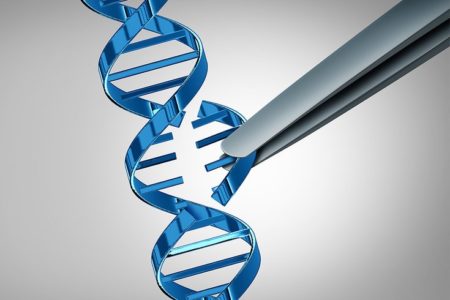February 13, 2020 – I have written a number of postings here on CRISPR, the genetic tool first described by Jennifer Doudna in a paper published in the journal Science in 2012. CRISPR along with selective proteins is a tool for swapping out bad genes with good ones. It has application to both repairing DNA and RNA and it can make its repairs to these nucleic acids outside the body and then be reintroduced to cure cancer and other genetic-caused diseases.
At the University of Pennsylvania, patients suffering from sarcoma and multiple myeloma have been treated in clinical trial. The doctors drew blood from patients to harvest the T-cells, then genetically engineered them before returning them to the patients. Called ex-vivo therapy because it involves the re-engineering of patients cells outside their bodies, it involves a two-stage process. First, the patients undergo treatment to kill all of their normal T-cells. Second, the altered T-cells are cultured to create a significant population before being introduced into the patients’ blood systems. In the case of both Pennsylvania cancer patients, the decision to try ex-vivo CRISPR therapy came after exhausting all traditional cancer-fighting techniques. As of the writing of this posting, the therapy appears to have worked.
In Pennsylvania, what got added and what got cut?
Clinicians added one cancer attacking gene to harvested T-cells while using CRISPR to delete a PD-1 gene responsible for acting as a brake on immune system’s defenses. That meant the engineered T-cells were reprogrammed to be more aggressive in seeking out and destroying cancer cells.
CRISPR clinical trials are beginning to sprout around the world. The Pennsylvania trial is one of several. Fyodor Urnov, of the Altius Institute of Biomedical Sciences in Seattle and at UC-Berkeley, describes 2019 as the year when the training wheels came off CRISPR as a tool for fighting genetically-caused diseases. On the U.S. government’s clinical trials database today the site lists 33 studies using CRISPR of which some have ended.
On Europe’s clinical trial database there is one active trial listed. But Europe in 2019 has already seen the successful use of CRISPR with a German patient suffering from beta-thalassemia, a genetic blood disorder.
A 12-patient clinical trial using the German model was announced in November 2019 in Nashville, to treat the disease.
Another genetic blood disorder, sickle-cell anemia has been treated using CRISPR. In a clinical trial, the gene-editing system was used to modify bone marrow stem cells to produce high levels of fetal hemoglobin which was then introduced back into the patient in a transplant.
According to the CISION PR Newswire, today, there are more than 30 CRISPR clinical trials underway involving more than 1,000 patients with the U.S. and China the leaders in the field.
Trials include using CRISPR to treat Type-1 Diabetes Mellitus, Glycogen Storage Disease, Duchenne Muscular Dystrophy, Myotonic Dystrophy, Cystic Fibrosis, and a number of refractory cancers including blood disorders and carcinomas. More than 125 patents from clinical laboratories and pharmaceutical companies are currently in the application mix for CRISPR-based treatments. So if 2019 was the year when the training wheels finally came off the technology, 2020 looks like CRISPR therapies will be moving to the racing circuit.









